Wedding Florist Tips: Creating Your Dream Bouquet
Planning your wedding can be both exciting and overwhelming—especially when it comes to choosing the perfect flowers. From selecting the right blooms to aligning them with your theme and budget, every decision matters. Knowing some key tips can help make this potentially stressful task much easier.
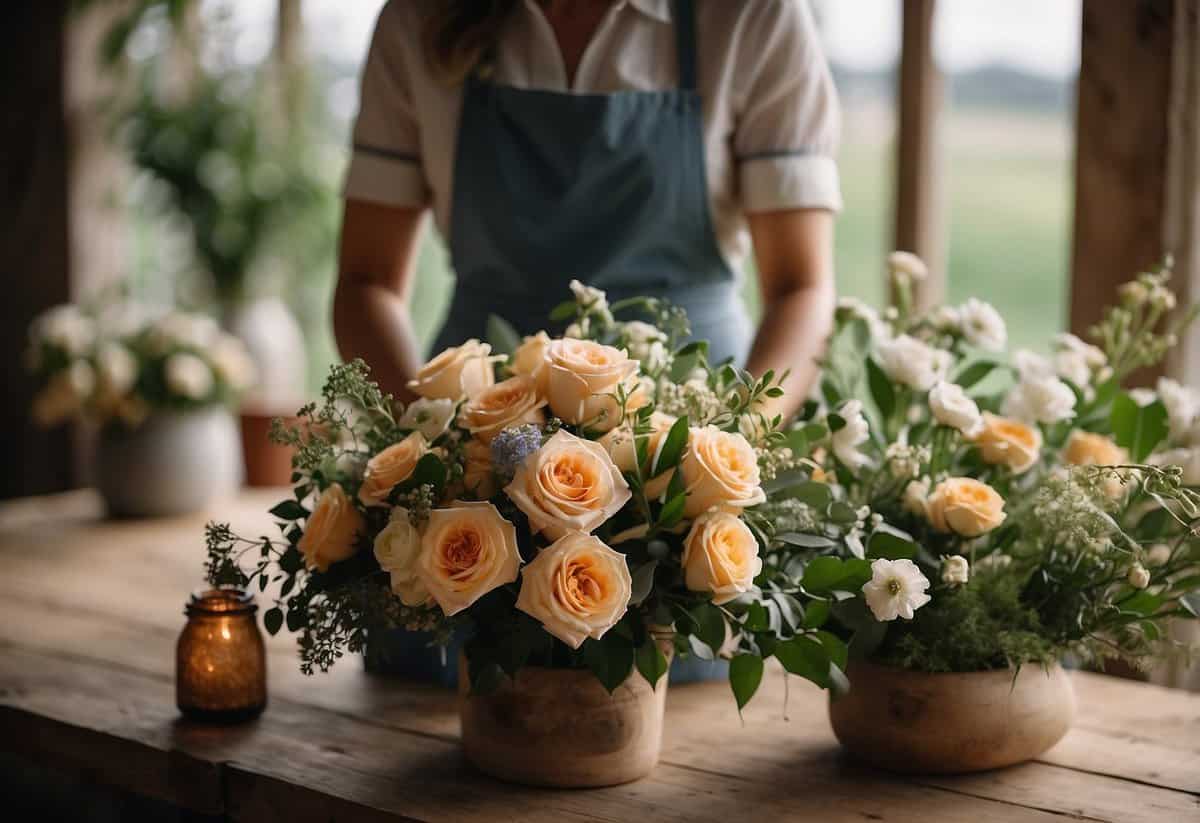
Your wedding flowers play a major role in setting the mood and style of your big day. They can enhance your venue, complement your theme, and even reflect your personality. With a few helpful tips from experienced florists, you can ensure your floral arrangements are exactly what you envisioned.
1) Schedule Consultations Early
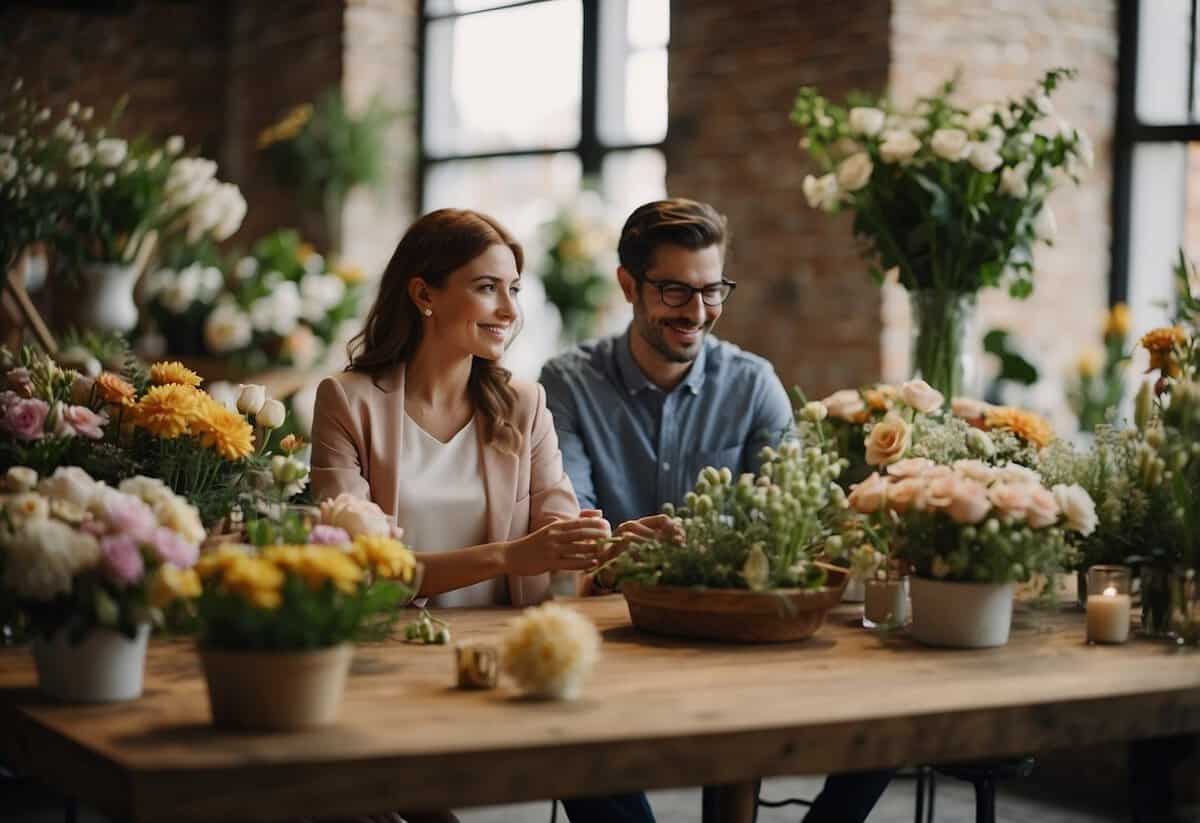
You should schedule your florist consultations as soon as possible. Aim to book them about nine months before your wedding day. This helps ensure you get your first choice of florist and allows plenty of time to plan.
Early consultations are especially important during the busy wedding season. Many florists have limited availability and book up quickly.
Bring some ideas to your consultation. Even if you’re unsure about specific flowers, having a general vision can help. This makes it easier for your florist to understand your style and needs.
Remember to discuss your budget early on. Knowing how much you can spend will guide your choices and help your florist make suitable recommendations.
2) Consider the seasonality of flowers

When planning your wedding flowers, it’s important to think about the time of year. Not all flowers are available year-round. Choosing flowers that are in season can save you money and ensure better quality.
For example, peonies are lovely, but they aren’t available every month. You might want garden roses instead, which look similar and are available most of the year.
Using seasonal flowers also helps your arrangements stay fresh and vibrant longer. You can still get beautiful, colorful bouquets by choosing what’s in bloom during your wedding month.
Greenery can also play a big role. It fills out arrangements and is usually available regardless of the season. This can help keep your floral budget in check without sacrificing beauty.
3) Check the Florist’s Portfolio
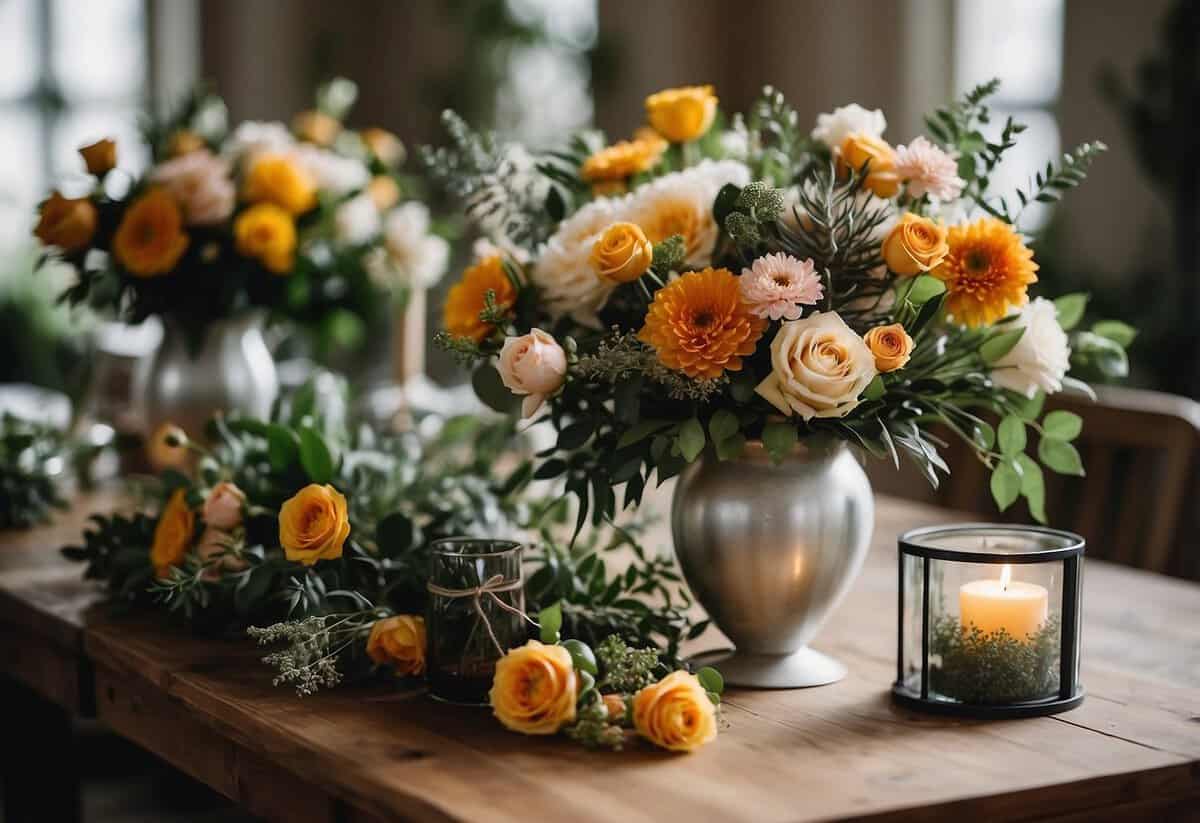
Before hiring a wedding florist, look at their portfolio. This is a collection of their previous work. It gives you a clear idea of their style and skill level.
Pay attention to the variety of arrangements they have done. This includes bouquets, centerpieces, and other décor pieces.
Look for examples that match the theme or style of your wedding. If you have a beach wedding, see if they have experience with such settings.
Also, consider the quality of the flowers in the photos. Are they fresh and vibrant? This can tell you a lot about the florist’s attention to detail.
A good portfolio should inspire confidence. If the designs impress you, it’s a good sign that the florist can bring your vision to life.
4) Prioritize Your Must-Have Flowers
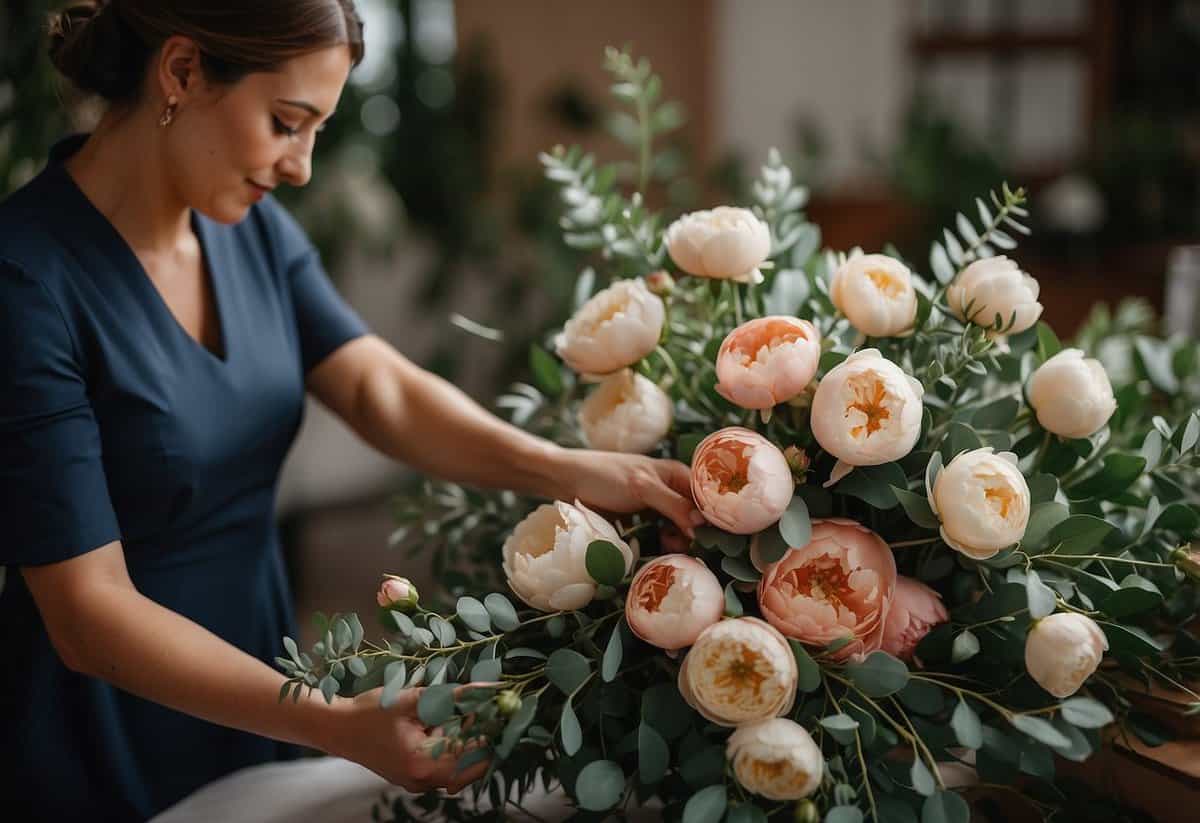
When planning your wedding flowers, it’s important to figure out which blooms you absolutely must have. These are the flowers that hold special meaning or symbolize something important to you. Maybe your grandma’s favorite flower or a bloom that you and your partner love.
Make a short list of these must-have flowers. Discuss this list with your florist to see what’s available and within budget. Some flowers may be out of season or too costly, so be prepared to substitute if needed.
Focusing on your must-have flowers will help guide the rest of your floral choices. This way, you ensure that the most important ones are included, making your arrangements special and personal to you.
5) Discuss Your Budget Openly
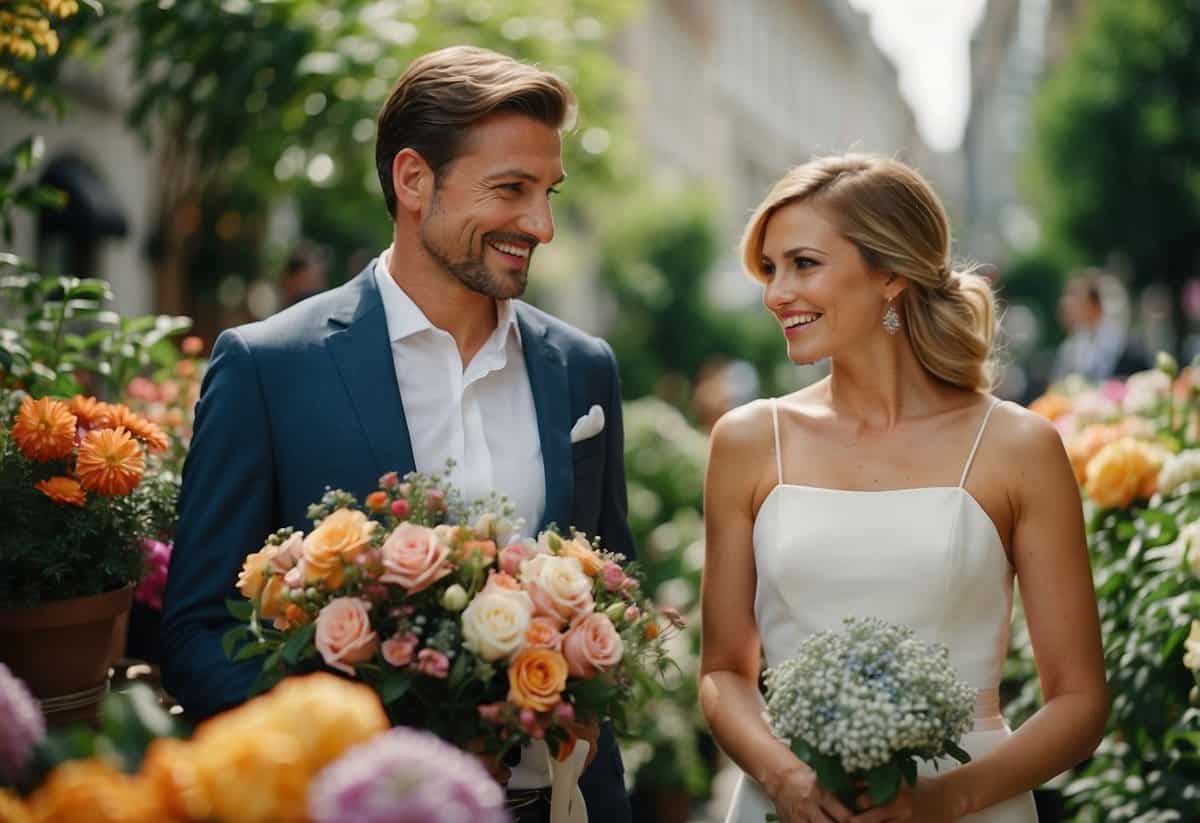
Talking about money might feel awkward, but it’s crucial when planning your wedding flowers. Be upfront with your florist about what you can afford.
Share your maximum budget early on. This allows your florist to recommend flowers and designs within your price range. You’ll avoid falling in love with arrangements that are too expensive.
Don’t be afraid to ask for ways to save. Your florist can suggest alternatives that still look beautiful and fit your theme. This conversation can help make the most of your budget.
6) Think about the color scheme
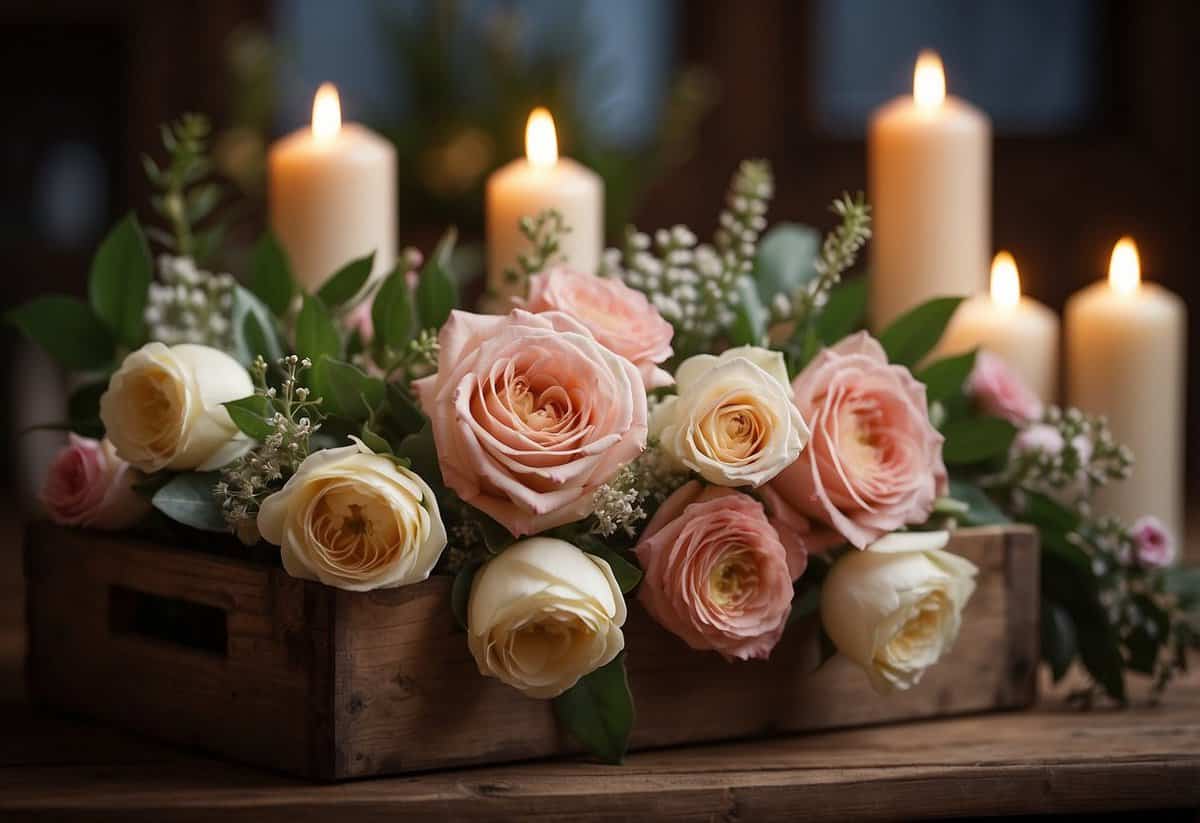
Your wedding color scheme is super important. It ties everything together and sets the mood.
First, decide on your main colors. Think about what makes you happy and what fits the season. For example, spring might be perfect for pastels, while autumn could work well with deep reds and golds.
Next, share your color scheme with your florist. This helps them choose flowers that match your vision. If you don’t do this, you might end up with mismatched colors.
Also, consider the venue. Some colors look better in certain settings. A beach wedding could shine with blues and yellows, while a garden wedding might look great with greens and pinks.
Remember, your color scheme should reflect your style and what you love. Don’t be afraid to mix and match until it feels just right.
7) Remember to Order Extra Boutonnières
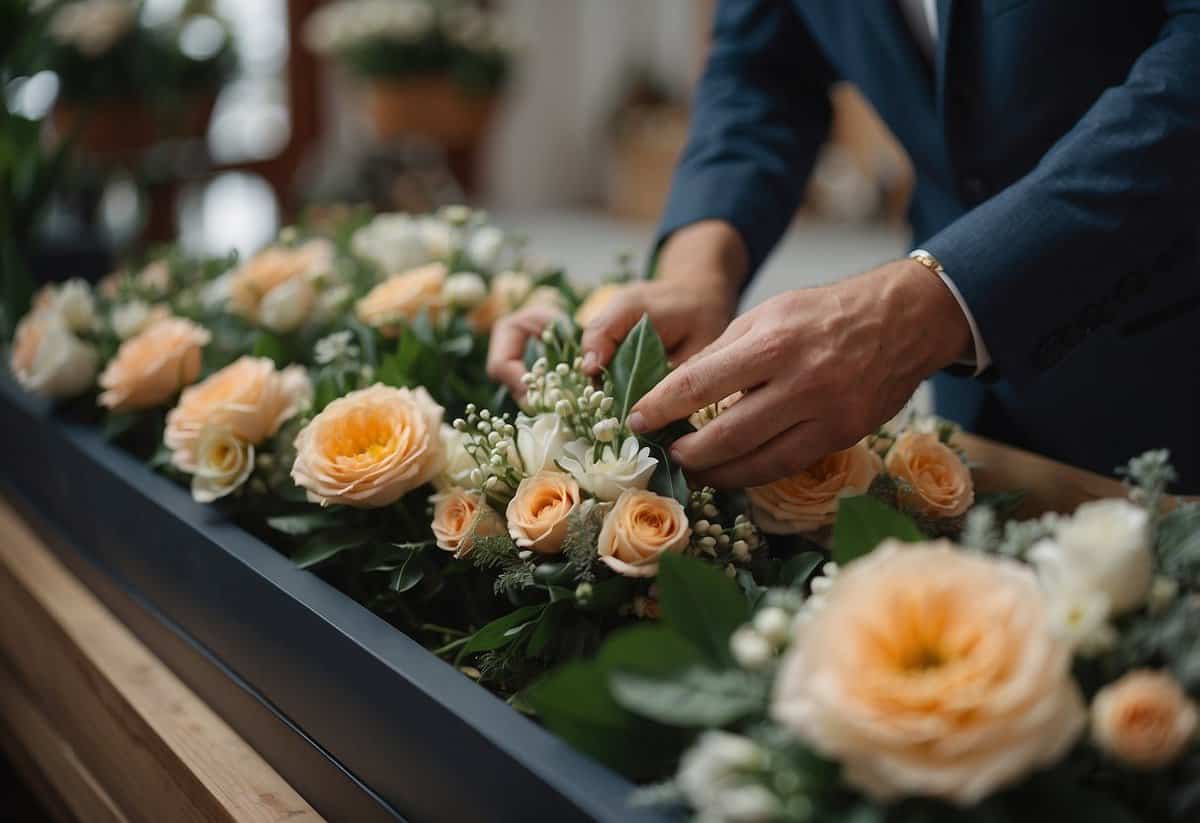
It’s a good idea to order extra boutonnières for your wedding. They can get damaged during the day with all the hugging, dancing, and photos.
Having a few spares means you won’t have to worry if one gets crushed or lost. It’s always better to be safe than sorry.
Extra boutonnières can also be used to decorate chairs or tables at the reception in case any get misplaced.
8) Choose a mix of blooms and greenery
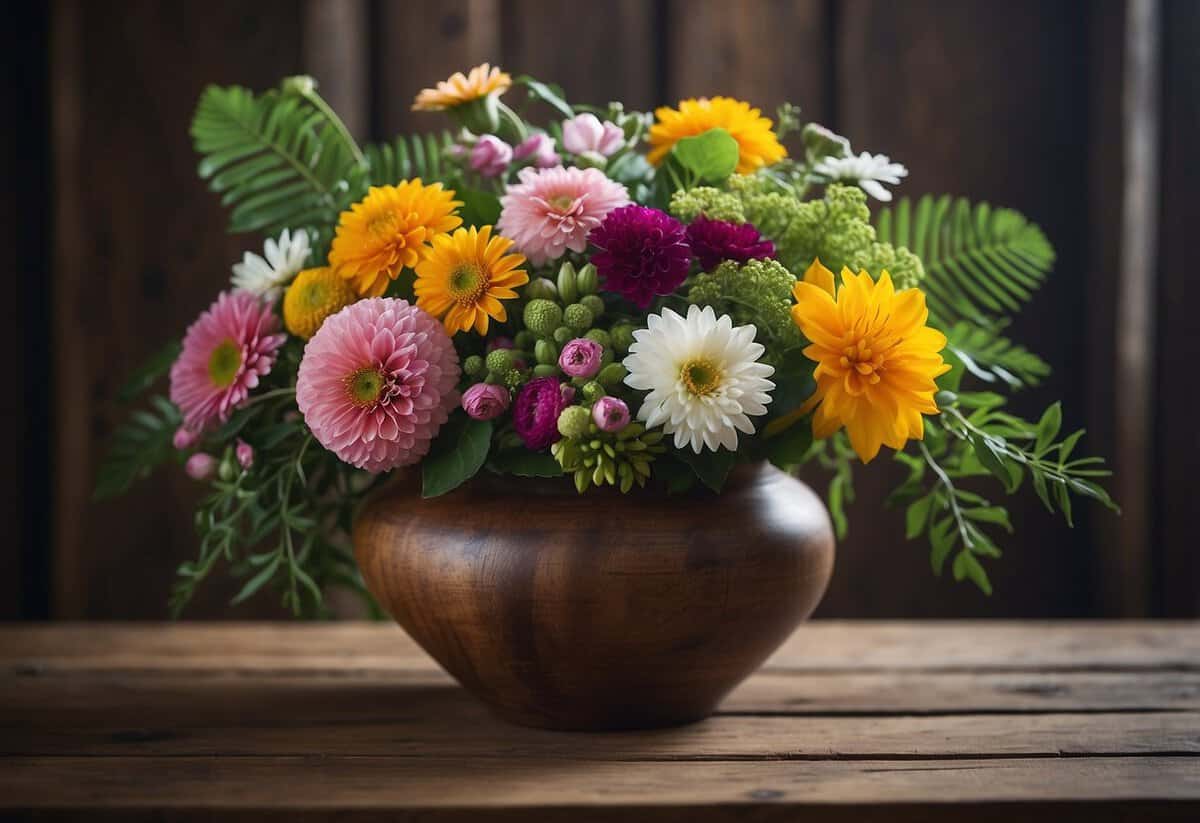
Mixing different flowers and greenery can make your wedding flowers look more interesting and beautiful.
Different types of flowers can add colors and textures to your arrangements. For example, you can combine roses, lilies, and daisies to get a mix of shapes and sizes.
Greenery is also important. Adding leaves and stems can make your bouquets look fuller and more natural. Think about using eucalyptus, ferns, or ivy to add lushness.
Combining flowers and greenery helps tie all your floral pieces together, from bouquets to centerpieces. This makes everything look coordinated and well-planned.
9) Incorporate Personal Touches
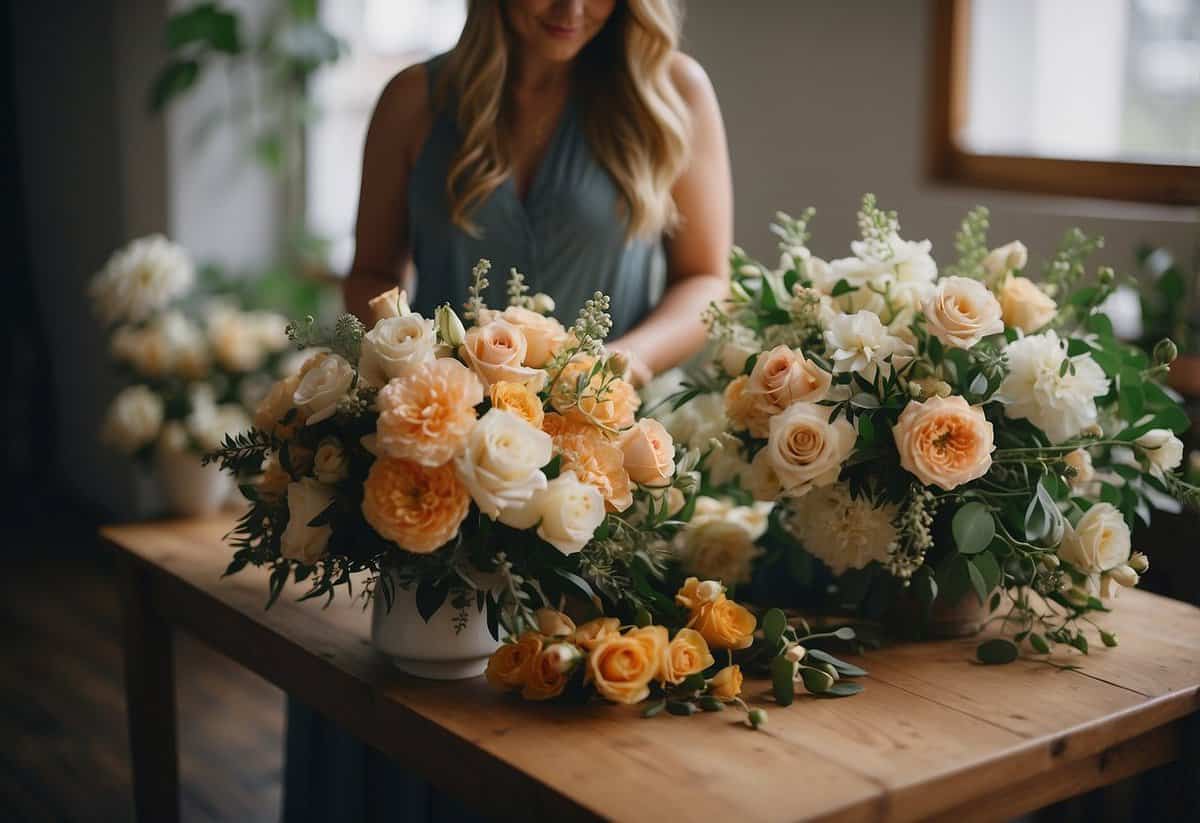
Adding personal touches to your wedding flowers can make your big day feel even more special. Think about what uniquely represents you and your partner.
You could use cardholders like vintage suitcases or rustic crates that reflect your style.
DIY projects are a fantastic way to add a personal flair. Handcrafted floral garlands or pressed flower table numbers add warmth and uniqueness.
Work with your florist to customize your flower designs. Choose colors and arrangements that fit your personality and theme.
Small details, like incorporating favorite flowers or meaningful greenery, can make a big impact. Every little touch tells your unique love story.
10) Don’t forget about rental options
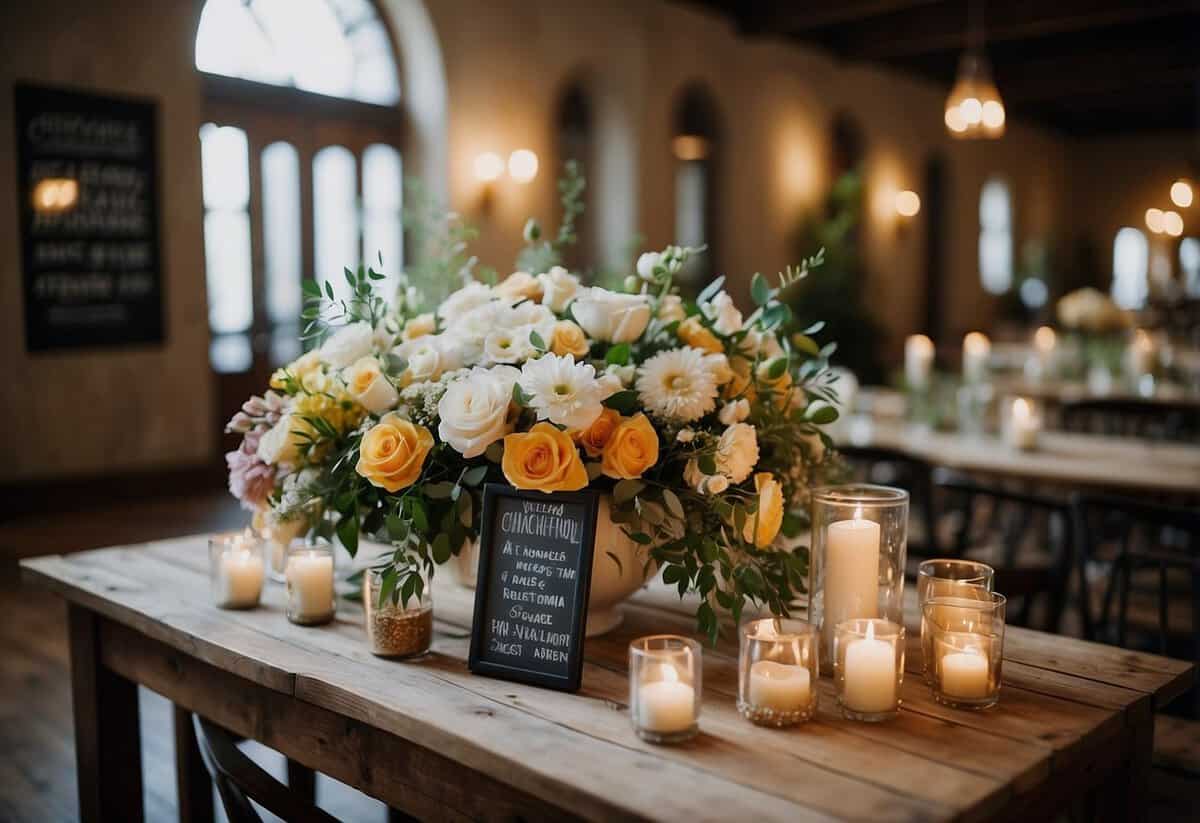
You might think only fresh flowers are available for rent. It’s not always the case. Renting flowers, especially artificial ones, has become popular.
Some companies like Something Borrowed Blooms offer beautiful faux flowers. These options can be eco-friendly and budget-friendly. This might save you money while still looking great.
Rental flowers also reduce waste. After your wedding, you won’t have to worry about what to do with leftover flowers.
Think about renting decor items like vases or arches too. It’s a smart way to get what you need without the extra cost.
Talk to your florist about rental options. Mixing fresh and rented flowers can create a beautiful look. It’s another way to plan your dream wedding without breaking the bank.
Choosing the Right Wedding Florist

Selecting a wedding florist involves careful research, consultations, and budget planning. Each step is crucial to ensure your wedding flowers are beautiful and within your budget.
Research and Recommendations
Start by searching online for local florists and browsing their work. Look at websites, portfolios, and social media pages. Instagram and Pinterest are great platforms to see florists’ styles and past work. Read reviews on sites like Yelp or Google Reviews to understand others’ experiences.
Ask friends or family members for their recommendations. They might have worked with a florist they loved. Personal referrals can offer peace of mind. Attend bridal shows or wedding fairs to meet florists in person and see their arrangements up close.
Consultation Process
Schedule consultations with a few shortlisted florists. During these meetings, discuss your wedding theme, colors, and flower preferences. Bring inspiration photos and any color swatches you have. Visual aids help florists understand your vision better.
Ask each florist about their availability on your wedding date and their process for working with clients. Discuss logistics like setup times and delivery. You should also understand their approach to backups or substitutions if your preferred flowers are unavailable.
Evaluate the florists’ communication and responsiveness. A good connection and clear communication ensure a smooth planning process. Don’t hesitate to ask questions or seek clarifications.
Budget Considerations
Determine your floral budget early. Share this with the florists during consultations to see what they can offer within your range. Ask for itemized quotes that include everything from bouquets to centerpieces and delivery fees.
Understand that flower prices can vary based on seasonality. Discuss which flowers are in-season and affordable during your wedding month. Florists can suggest beautiful, budget-friendly alternatives if your preferred blooms are expensive.
Finally, be clear about any additional charges or fees, such as setup, delivery, or breakdown costs. Ensure everything is outlined in a contract to avoid surprises later.
Planning your wedding flowers involves key steps in research, consultation, and budget management. Taking the time at each stage ensures your florals will perfectly complement your big day.
Seasonal Flower Selection
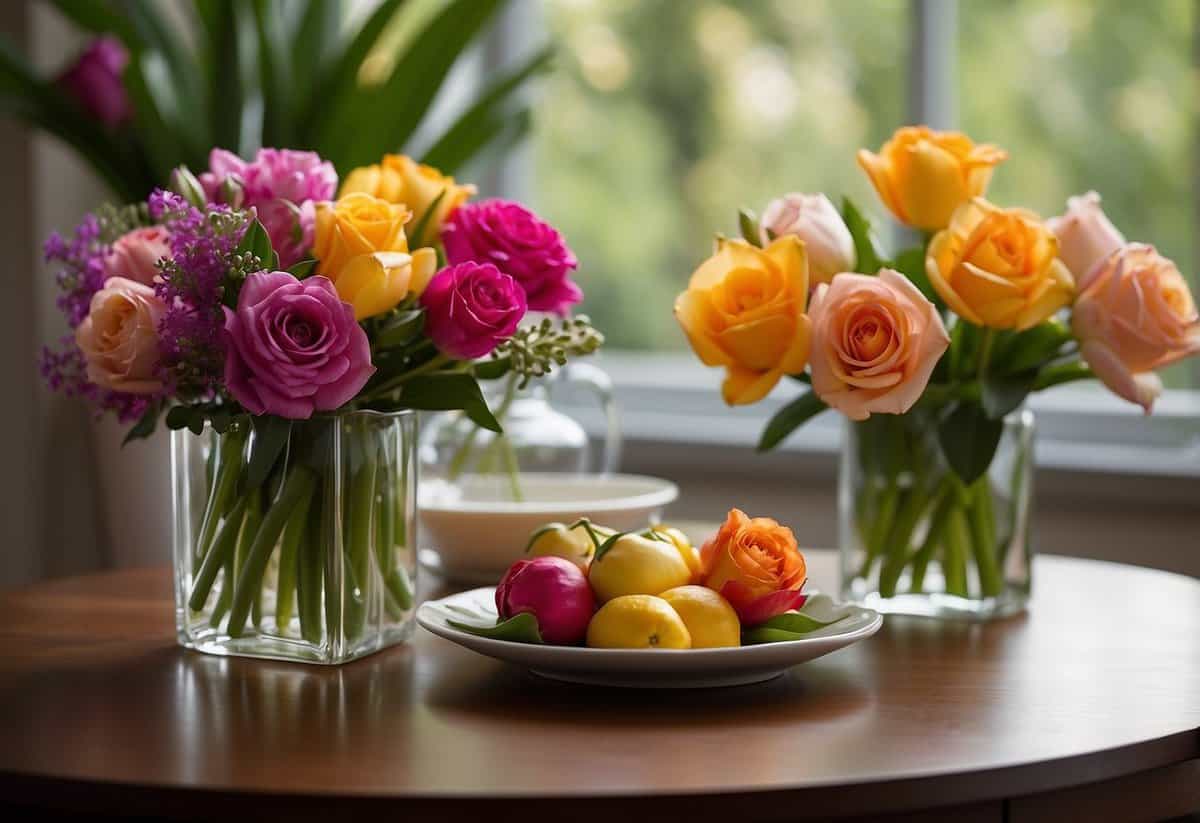
Choosing the right flowers for your wedding can help create a beautiful and cohesive look. Different seasons offer a variety of blooms that can enhance your theme and fit your budget.
Spring and Summer Blooms
Spring and summer offer a range of vibrant and fresh flowers. In spring, consider tulips, daffodils, and peonies. These flowers are not only in season but also offer a romantic and delicate feel. Summer brings roses, dahlias, and sunflowers into full bloom. These flowers are perfect for adding bold colors and lush textures to your bouquet.
Spring Flowers in Season:
- Tulips
- Daffodils
- Peonies
Summer Flowers in Season:
- Roses
- Dahlias
- Sunflowers
Using these flowers when they are in season ensures their peak freshness and availability.
Fall and Winter Flowers
For fall weddings, look for flowers like chrysanthemums, marigolds, and asters. These blooms bring warm tones and rich textures. Roses also remain popular during the fall because of their timeless elegance.
Winter weddings can be magical with flowers such as amaryllis, poinsettias, and holly. These flowers are not only in season but also add a festive touch to your arrangements. Pairing these with evergreen branches can create a cozy and elegant vibe.
Fall Flowers in Season:
- Chrysanthemums
- Marigolds
- Asters
Winter Flowers in Season:
- Amaryllis
- Poinsettias
- Holly
Seasonal flowers for these times often come in deeper and more muted colors, adding warmth to your wedding decor.
Tips for Year-Round Availability
If you fall in love with a flower that isn’t in season, there are ways to include its essence. Flowers like garden roses can often stand in for peonies, and hydrangeas can substitute for sweet peas. These alternatives offer similar looks without the seasonal limitations.
For a timeless look, consider flowers that are broadly available year-round, such as roses, carnations, and baby’s breath. Additionally, using greenery like ferns and eucalyptus can fill out arrangements and provide a lush background without depending on seasonal flowers.
Year-Round Available Flowers:
- Roses
- Carnations
- Baby’s Breath
- Greenery/Leaves (e.g., ferns and eucalyptus)
With these tips, you can ensure your wedding flowers are fresh, beautiful, and fitting for your special day!








